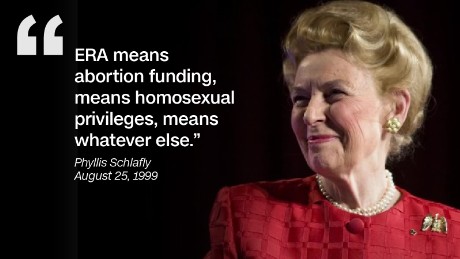In the discourse surrounding politics and ideology, the association of feminism with left-wing politics and the characterization of anti-feminism as a right-wing ideology have become prominent. These alignments, while prevalent, may not precisely encapsulate the complexity of either movement. Feminism, fundamentally a pursuit of gender equity, transcends conventional political affiliations. Likewise, anti-feminism encompasses a variety of perspectives that may find support across the political spectrum. This examination seeks to unpack these dynamics, considering their historical impact on societal progression.
Understanding Feminism: Beyond Political Labels
The feminist movement is an intricate tapestry of ideologies that advocate for the rights of women, encompassing a range of goals from securing voting rights to addressing systemic inequalities embedded within social, economic, and political frameworks. Historically, feminism has evolved through distinct waves that can be affiliated with various political ideologies, often coinciding with broader social movements.
First-wave feminism, emerging in the late 19th and early 20th centuries, primarily sought suffrage and legal rights for women. As women secured the vote, the movement transitioned into the second wave during the 1960s and 1970s, which challenged cultural norms surrounding gender roles and sought workplace equality. The third wave emerged in the 1990s, emphasizing individuality and diversity within feminist thought. Importantly, these phases of feminism have often aligned with leftist values, advocating for social justice, equitable economic policies, and civil rights. However, this alignment has not uniformly characterized the movement across its entire history.
Contemporary Feminism: Diverse Voices and Perspectives
Modern feminism is a mosaic reflecting various cultural, racial, and ideological perspectives. While predominant feminist organizations might align with left-wing agendas, there is a growing recognition of the need for intersectionality—understanding how various social categorizations overlap and contribute to systemic discrimination. Intersectional feminism emphasizes the importance of addressing not only gender but also race, sexuality, and class, situations which enhance the movement’s relevance across different socio-political contexts.
Furthermore, significant factions within feminism cannot be neatly categorized as left-wing. Some women advocate for conservative feminist positions, emphasizing personal agency while simultaneously aligning with traditional values. This conundrum highlights the incongruity of defining feminism strictly within the confines of left-wing politics.
The Conservative Feminist Perspective
Conservative feminists argue that feminism, in its essence, should empower women to pursue their choices without imposing a singular ideological framework. They often embrace traditional gender roles while advocating for women’s rights in professional and educational contexts. This point of view illustrates the adaptability of feminist thought to various political ideologies. In this light, it becomes clear that feminism is a robust movement that can coexist with right-leaning perspectives, even if such alignments are less visible within mainstream feminist discourse.
Anti-Feminism: Defining the Contours
Conversely, anti-feminism often gains traction among right-wing factions. This is particularly evident in social conservatism, which frequently critiques feminist agendas as disruptive to traditional family structures and moral values. Anti-feminist narratives often frame feminism as an adversarial force against men and societal stability, positing that the women’s rights movement undermines established social order.
Despite this predominant view, anti-feminism is not monolithic. It encompasses a range of beliefs, including critiques of certain feminist ideologies perceived as exclusive or overly radical. For example, some individuals from centrist backgrounds may express concern over aspects of radical feminism that prioritize gender identity over biological realities. This highlights that dissenting perceptions of feminism can emerge from various political orientations, questioning the binary classification of anti-feminists as strictly right-wing.
The Historical Context: A Complex Interplay
To fully comprehend the relationships between feminism, anti-feminism, and political ideology, one must consider the historical context. The women’s suffrage movement, a pivotal moment in feminist history, found unlikely allies in some conservative factions. Notably, many early suffragists were motivated by moral reform missions that paralleled the agendas of temperance movements, often supported by conservative groups. As such, the historical entanglement of feminist and conservative values complicates the assumption of an essential left-right divide.
Moreover, prominent figures within the conservative movement, like Phyllis Schlafly, have historically claimed a form of feminism that is distinctly conservative. Schlafly’s activism against the Equal Rights Amendment (ERA) in the 1970s exemplifies how right-wing ideology can be woven into anti-feminist discourse, arguing that legal equality for women would diminish the traditional family structure, a cornerstone of her beliefs.
Modern Political Discourses: Nuances in Ideological Alignments
In contemporary political dialogue, the alignment of feminism with left-wing politics remains robust but increasingly nuanced. Political parties in various countries have adopted feminist stances, often framed in progressive rhetoric that champions LGBTQ+ rights, reproductive freedoms, and social justice. Yet, it is essential to recognize that left-wing feminism also faces dissociation from women with conservative values who might seek to empower women within their defined frameworks without adhering to progressive agendas.
As political landscapes evolve, the binary distinctions of left-wing feminists and right-wing anti-feminists must be viewed through a lens that acknowledges their complexities. The rise of populism in various countries has revealed unexpected feminist allies within right-wing factions who advocate for issues like maternity leave and economic empowerment without subscribing to the entire feminist agenda.
Conclusion: Reimagining Feminism and Anti-Feminism
Ultimately, the question of whether feminists are intrinsically left-wing and anti-feminists inherently right-wing is a reductive proposition that fails to capture the diversity within both movements. Feminism, rooted in the struggle for equity, spans a spectrum of beliefs that fluidly intertwine with broader socio-political dynamics. Simultaneously, anti-feminism, while frequently aligned with conservative ideals, can arise from diverse critiques of feminism that cross ideological boundaries.
The history of women’s rights movements reflects a narrative that challenges simplistic classifications. Acknowledging the intricacies within feminist and anti-feminist ideologies enables a more profound understanding of the socio-political landscape that shapes gender discourse. As feminism continues to evolve, emphasizing inclusivity and dialogue among varied ideological perspectives becomes paramount for fostering a more equitable society.





























